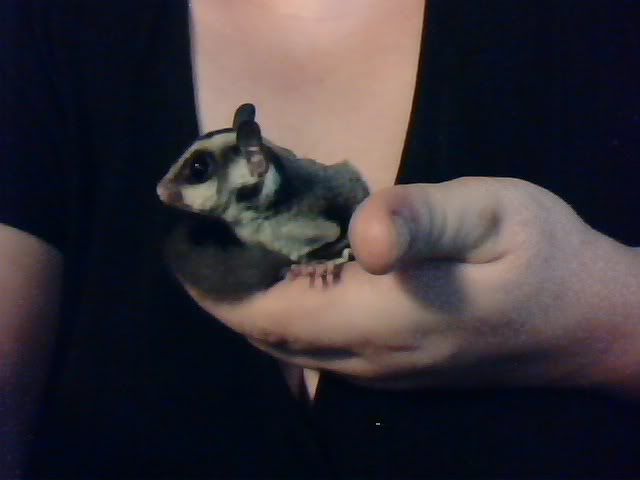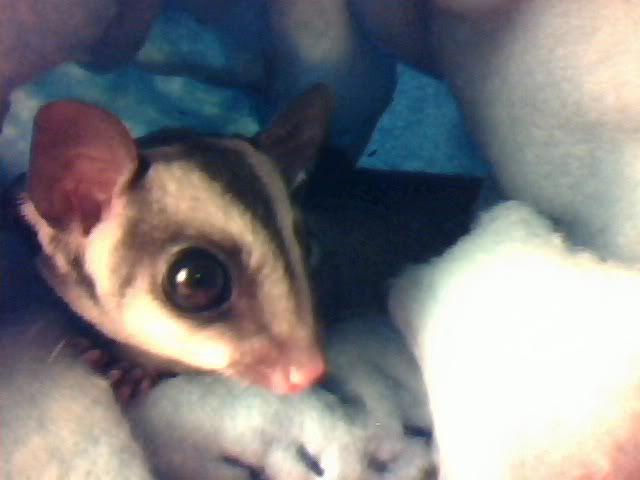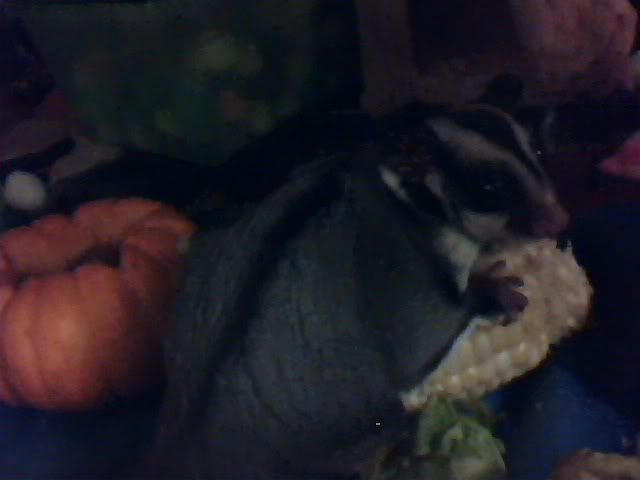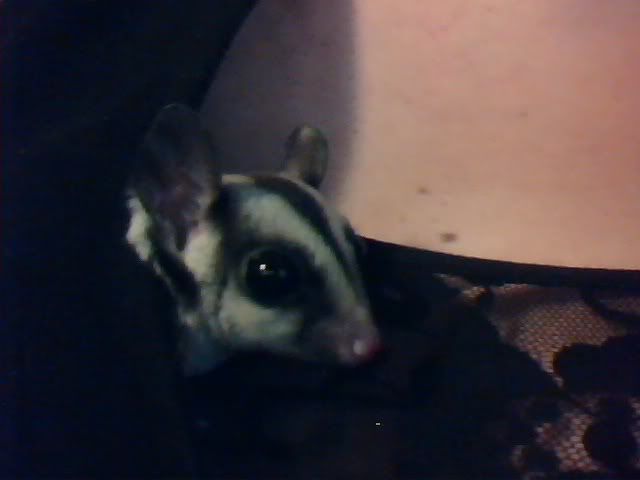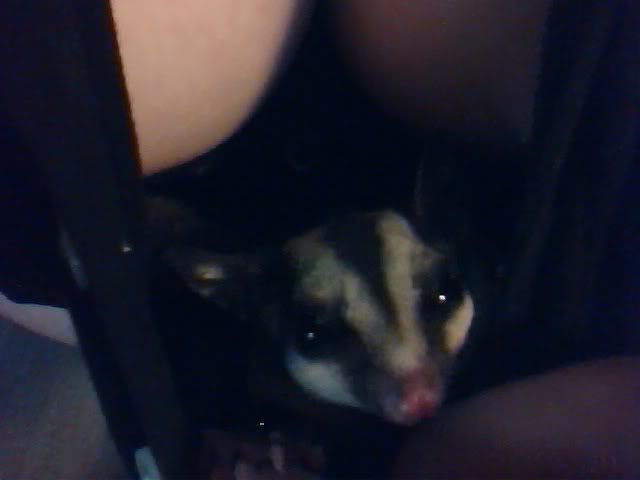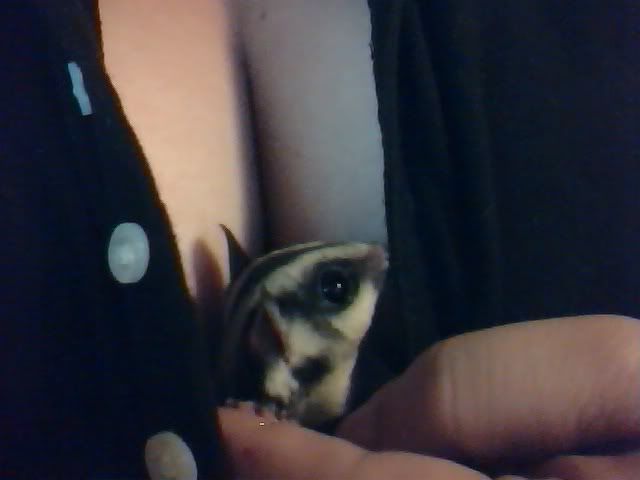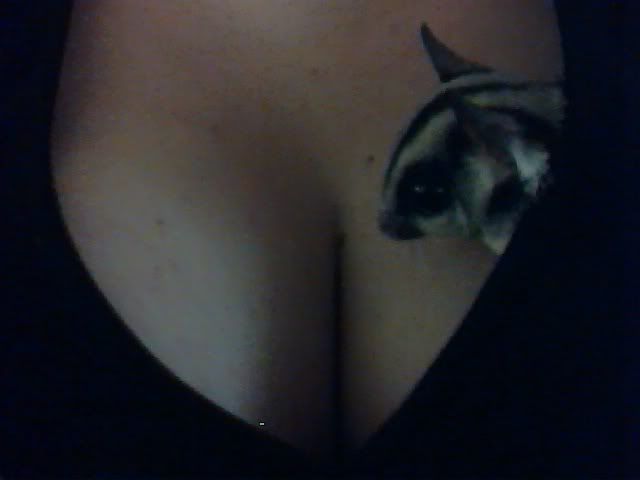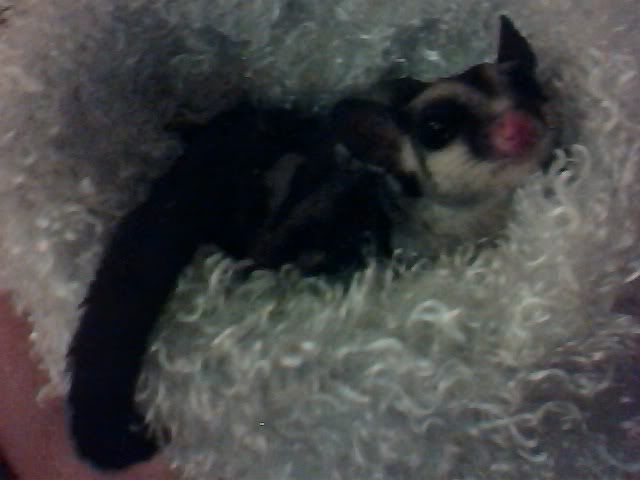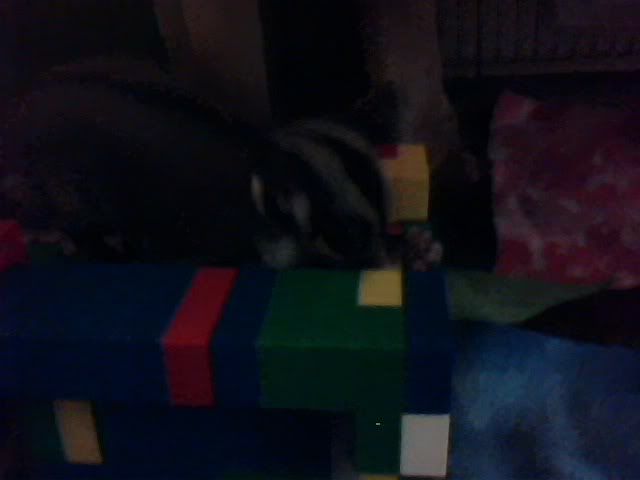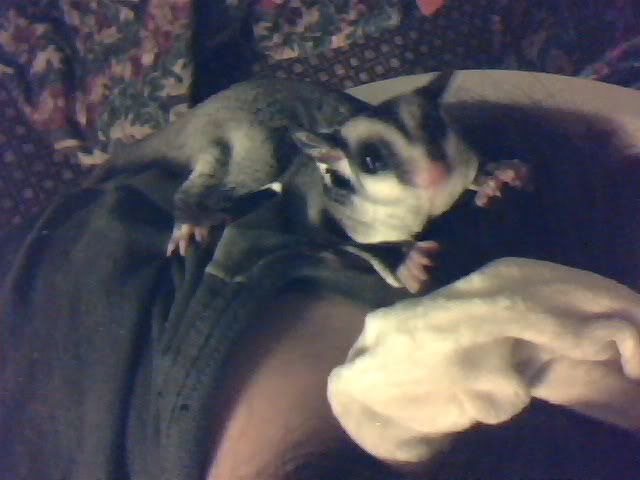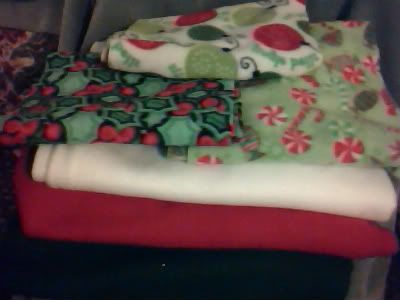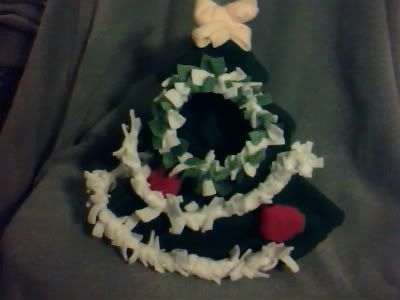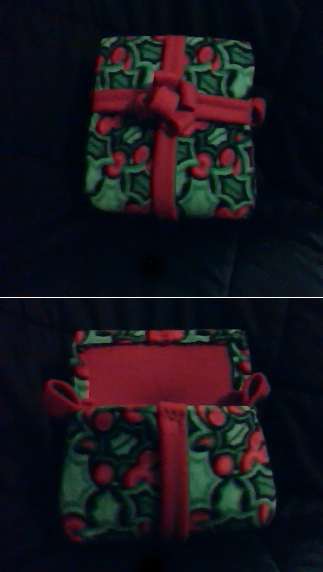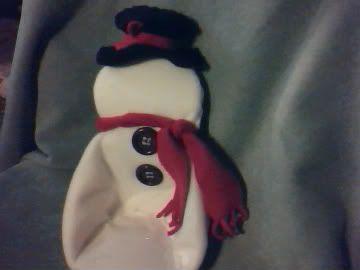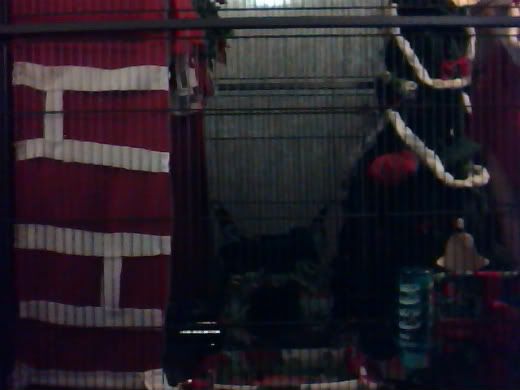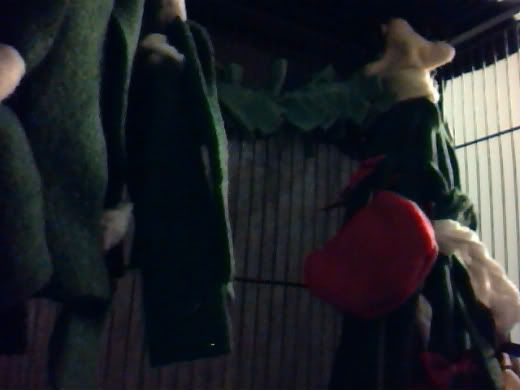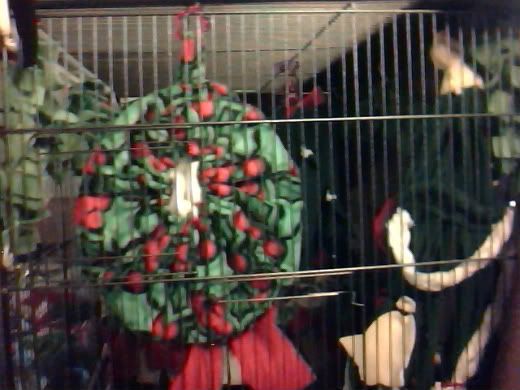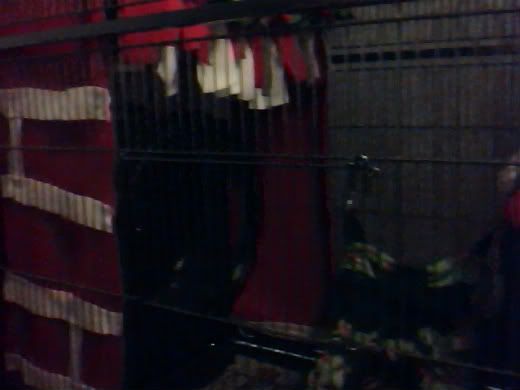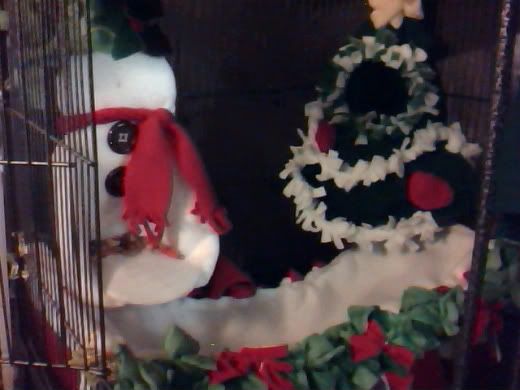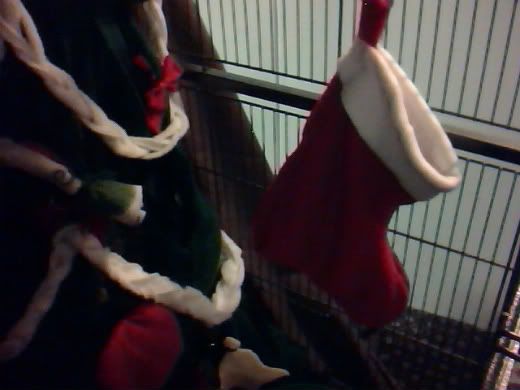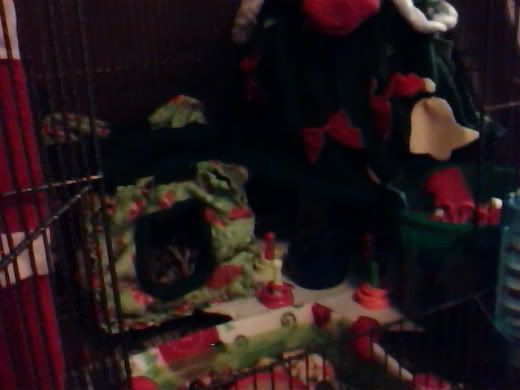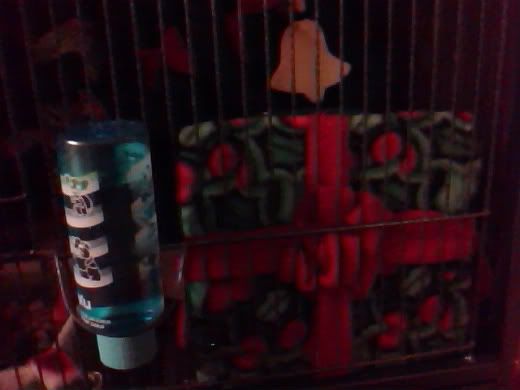Since I first started talking about getting my sugar gliders, I've been bombarded with questions. What are those things? Squirrels? Rodents? Where did you hear about them? What do they eat? Do they really need such a huge cage? Are they friendly? Do they bite? Do you really take them everywhere with you? Did it just bark?! Do you really let them ride around in your shirt?! I've answered these questions, and many more, so often that I've considered typing them all out and just cutting and pasting the answers to save some time. Especially with so much misinformation out there on the web and from mall kiosks and swap meets from unscrupulous mill breeders who are more concerned with making a dollar than the welfare of these animals, I felt it was important to get accurate information out there.

How did I first hear about sugar gliders? Quite honestly, it all began with my wanting a puppy. I didn't want a pet I would have to go out in the snow and walk in the middle of the night. I considered various options. I wanted something lovable that I could nurture and spoil. Cats were usually too independent. Hamsters and gerbils had such short lifespans. You can't snuggle a fish. Someone mentioned these exotic pets called sugar gliders they saw on a news show recently. And so my research began.
So what exactly
*is* a sugar glider? Sugar gliders are small marsupials (meaning the females have a pouch to carry their young like a kangaroo) native to Australia, Tasmania, New Guinea and Indonesia. Fully grown, their head and body typically is 5-6 inches in length, with their tails adding another 5-6 inches. On average, an adult sugar glider will weigh around 4-6 ounces. In the wild, sugar gliders are nocturnal colony animals who live in the tree tops, gliding up to 50 feet from tree to tree. They are sap suckers and insectivores, eating native plants and the nectar from them along with a variety of insects and the occassional egg snatched from nests. In the wild, they are typically gray colored with white stomachs, with black markings on their face, legs, and tail, as well as a black stripe along their back. While many gliders kept as pets resemble those in the wild (commonly called standard grays), due to careful breeding practices in captivity, the coloring of pet gliders varies emensely, to include black beauties, leucistic, cremeno, white tip, white face, lion face and many other variations. Sugar gliders have opposable fingers and thumbs that make them amazing climbers and have musk spots for marking on both their chests and the top of their heads. Though in the wild sugar gliders normally live 4-6 years, in captivity they live on average 10-15 years. When handled regularly and with love, sugar gliders will form strong bonds with their owners, not only coming to them and responding with affection like licking kisses, but will lovingly nuzzle into their owners, even riding on their clothing and in their pockets as a way of staying close to them.

How young can sugar gliders be adopted? Sugar glider joeys are live born after being inside their mother only 16 days. They then are helped up into their mother's pouch where they continue to grow while attached to a nipple for around 70 days. The mother will then detach her babies and they are considered out of pouch. They will still nurse from their mother periodically while they are introduced solid foods and learn skills vital to survival on their own. Most reputable breeders will not separate joeys from their parents earlier than 8 weeks out of pouch (oop). My joeys, Lilo and Stitch, came home with me the weekend after they hit their 8 week oop milestone.


Sugar gliders are natural colony animals, living in groups of around 15-30 on average in the wild, so it's never reccommended for anyone to own just one. Because they are colony animals, they require frequent socialization, not only with their owners, but their own kind as well. Solo gliders are frequently known to suffer from depression, which can cause them to stop grooming themselves, eat less to the point where they become underweight and suffer health issues, and in extreme cases, even self-mutilate. Having even a pair of gliders provides them with a companion to play and snuggle with and will ultimately help as they bond with you, as well. It is recommended, however, for new owners to get males neutered instead of attempting to breed joeys to further increase their glider colony size. This is due, in part, to concerns over lineage. Tracking lineage not only helps owners of rare colored gliders preserve bloodlines and maintain the rare colored lines, but is also important with common colored gliders to assure that bloodlines aren't too closely bred, causing inbreeding and genetic problems. Neutering male gliders in any glider colony with females is also important because many new owners are ill-equipped to deal with pregnancy issues such as the possibilities of calcium deficiency and joey rejection. Even if the colony only consists of males, neutering is reccommended due to aggression issues between unneutered males, as well as the fact that unneutered males tend to spray more and have a stronger odor.

What do sugar gliders eat? Obviously, sugar glider owners everywhere are not pulling a Robinson Crusoe and living in the tree tops to keep their pets in their natural habitat. Exotic vets and nutritionists have done a lot of research on the dietary needs of sugar gliders, and many approved diets and varieties thereof, such as the high protein wombaroo (hpw), Bourbon's Modified Leadbeater's (bml), and LGRS Suggie Soup have been developed over the last decade. Gliders in the wild eat a lot of vegetation, sap and a variety of protein sources, so these diets attempt to reproduce the nutrition needed while maintaining the types of foods they would naturally eat. Unlike rodents, whose teeth continually grow and who benefit from eating hard pellets, pellet diets are widely believed to be unhealthy for sugar gliders, whose teeth are more delicate and are made more for stripping vegetation than for crunching hard pellets. Until an approved diet is chosen, it is often reccommended that owners offer cooked, unseasoned chicken or eggs (boiled or scrambled) as a protein source, with insects such as mealworms sparingly as treats due to their high fat content.

Sugar glider diets, regardless of which approved diet is chosen, typically consist of 50% protein source, 25% fruits and 25% vegetables, all while maintaining a 2:1 calcium:phosphorus ratio. Even with the most simplistic diet, doing the math to keep their fruit and vegetable ratios balanced is enough to make most people's heads spin. The accepted rule of thumb for adult non-pregnant sugar gliders is usually 1 tablespoon protein, 1 tablespoon fruits and 1 tablespoon vegetables per glider per day. Personally, I feed my gliders an hpw variation, with chicken or eggs occassionally on the side. I usually choose 3-4 fruits and 3-4 vegetables per night, often including foods like papaya and bok choy that are high in calcium to help maintain my ratios. Though most of a sugar glider's fluids are acquired through their food, it's always important to offer a fresh water source, as well, whether in a bottle or bowl.

Do sugar gliders really need those huge cages? Keep in mind that in the wild, sugar gliders live in the treetops and glide from tree to tree. While owners cannot offer unlimited wide open spaces, the common belief is that a glider cage should be a minimum of around 3 ft. x 2 ft. x 2ft. for a pair of gliders, so that they have room to climb, jump and practice gliding. The bar spacing should be half an inch wide maximum, so that they cannot squeeze through the bars. It is also important what the cage is made of and coated with because, with all their climbing, residue from some metals and from cheaper coatings that flake can get on them and make them sick. It is also important to note that sugar gliders are warm-blooded creatures and do not need heating rocks or heating pads as an amphibian or reptile might. Adding them to the cage could not only cause injuries such as burns from the items themselves and electrocution if they chew the wires, but dehydration as well.


Yes, that *is* my cage, top and bottom, freshly decorated with my first cage set, sans wheel, before my gliders came home. The cage I chose is 53" high x 31" long x 20.5" deep. The majority of the cage is decorated in fleece, the fabric of choice of the majority of sugar glider owners because it is both soft and warm, and is unlikely to fray and injure them or get their nails caught. If sewing your own fleece creations, it is important to use small, tight stitches, hidden whenever possible, to minimize the chance for injury. Sugar gliders commonly sleep together in a fleece pouch, but enjoy having other creations - hammocks, tunnels, trampolines, swings and vines, to climb and play on and in. They also enjoy foraging, as they would do for insects naturally in the wild, so the addition of foraging toys will keep them stimulated and happy. It's important to choose glider-safe wheels that do not have a center bar that they can injure themselves or their tails on as they run and jump and to avoid slits in the track they run on that they can catch their claws in. It's always best to steer clear of rodent wheels and purchase a safe wheel to avoid costly vet bills from injuries down the road. Sugar gliders are very playful and curious, enjoying climbing on and playing in toddler playsets and glider-sized ball pits filled with small balls and craft pom-poms.

Do I really carry my sugar gliders everywhere with me? Yes, I do. Lilo and Stitch have gone to the grocery store, Wal-Mart, the local malls, even the state museum with me. But I always bring them in zippered bonding bags so they cannot get out. Even though sugar gliders can bond well enough with their owners that we are comfortable carrying them around the house on our persons or in our pockets and clothing, it is important to never forget that they are an animal and, as such, are likely to attempt bolting when frightened or startled. Honestly, when contained in their fleece bonding bags, most people aren't even aware that I'm carrying anything more than a simple bag with me unless I purposely draw attention to myself.

Owners use bonding bags not only for bringing our gliders outside the house, but to help with the bonding process, as well. Owners will often carry their sugar gliders around during the day while the gliders sleep so that they becomed accustomed to our scent and learn to trust in our prescence. Because they are marsupials carried as babies in pouches by their mothers, many believe that carrying them in fleece pouches helps develop a similar nurturing bond. When bringing them outside in their bonding bag, though, it is important to take into consideration the weather so that your gliders do not get too hot or cold. Owners commonly add slices of a moist fruit or vegetable in their pouch while on trips to not only provide food but to avoid dehydration, as well. Most bonding pouches have a mesh window for ventilation.

Do I really carry my sugar gliders around in my shirt? Not always, but often enough. Many sugar gliders seem to equate the area around, and sometimes in, a woman's bra to a pouch. It is commonly believed that many gliders prefer this spot because of the warmth and closeness, as well as the sound of the heartbeat reminding them of when they were in their mother's pouch. Sugar gliders that prefer to ride either in or on a woman's bra are commonly called bra babies. Some women intentionally train their gliders to become bra babies; for others, it happens naturally on it's own. With my gliders, Stitch saw an opening and he took it.

There's so much information about sugar gliders, that it's almost impossible to cover it all without writing a book. They can be quite noisy, both crabbing when annoyed or disturbed and barking, similar to a chihuahua, to get your attention, warn of danger and communicate among the colony. Yes, they can bite - hard enough to draw blood, no less. Yes, they do need regular vet visits like other animals, though they do not need immunizations like a dog or cat would. No, they should not be allowed to play with your pets of other species because it only takes a moment for an accident to happen that can never be taken back and some animals, such as cats, have saliva that is toxic to gliders. There's guidelines for quarantines for new gliders, as well as introducing new gliders to an existing colony. There's tent time and bathroom time. Lists of safe plants, safe snacks, fruit and vegetable lists with ca:ph ratios to help with meal planning. Sugar gliders are not living furniture you can buy and leave in a cage in a corner, only looking in when you desire. Gliders are very high maintenance pets that are far from inexpensive to own or maintain. They live on average over a decade, so owning them takes a long term commitment. Owning sugar gliders has been compared to having toddlers for the next ten to fifteen years.

So why get sugar gliders if they are such a handful? Quite simply because, once bonded to you, sugar gliders can be the sweetest, most affectionate little creatures you'll ever meet. I'm greeted every day with kisses and affection and can't helped but be entertained watching what smart and clever little problem solvers they are. I find it impossible to become stressed out or get worked up and angry when they are snuggled up with me. Granted, sugar gliders are not for everyone, but now that I have my babies, I can't imagine my life without them.

